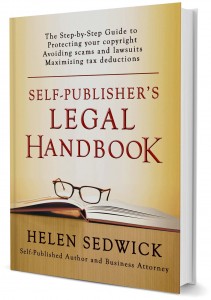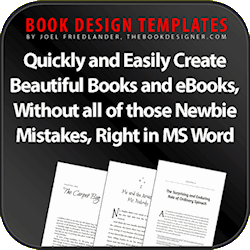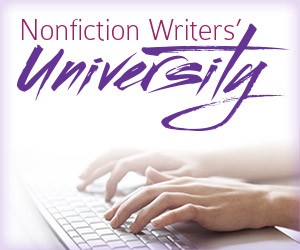Creative Commons is one of the best innovations to grow out of global interconnectivity.
Under copyright law, rights to use copyrighted materials are granted on a one-by-one basis. Traditional copyright law does not provide a practical way to permit wide-ranging use of copyrighted work. Creative Commons stepped in to fill this gap.
Creative Commons is a non-profit organization that has developed a set of off-the-shelf licenses for use by copyright holders who wish to make their work widely available for limited or unlimited purposes. To quote the Creative Commons website, “Our tools give everyone from individual creators to large companies and institutions a simple, standardized way to grant copyright permissions to their creative work.”
There are currently six basic Creative Commons licenses, each with its own icon, set of rights, and limitations. All require you to give attribution (credit) to the copyright owner by name and preferably with a link. Here are the attribution guidelines.
If you want to use the image or content for commercial purposes, look for one of these licenses.
- Attribution (You may alter the content.)
- Attribution-No Derivatives (You may not alter the content.)
- Attribution-ShareAlike (You may alter the content as long as your make your altered content available under the same Creative Commons license.)
If you want to use the image or content for non-commercial purposes only, then also look for one of these licenses.
- Attribution-NonCommercial (You may alter the content.)
- Attribution-NonCommercial-No Derivatives (You may not alter the content.)
- Attribution-NonCommercial-Share Alike (You may alter the content as long as your make your altered content available under the same Creative Commons license.)

Donated to public domain by AllAnd on Flickr
Creative Commons also provides an icon for designating that a work has been donated to the public domain with “No Rights Reserved.”
HOW DO WRITERS USE CREATIVE COMMONS LICENSES?
As the Licensor: If you want to put the world on notice that a certain expression, let’s say your blog, is available for copying and modification, mark your blog with the appropriate Creative Commons mark. The Creative Commons site has a simple questionnaire to help you determine the correct license.
As a Licensee: If you are searching for images, content, or other expression for your use, the Creative Commons site provides links to some of the larger databases for images and other content, including Flickr, Al Jezeera, Wikipedia, and the White House.
Google Images has a tool for sorting images by usage rights. Other sites that offer free images under Creative Commons’ licenses include MorgueFile, Stockvault, Openphoto, Freeimages, and Skitterphoto.com
No matter which site you use, be sure to click on tabs reading Terms of Use or License and review the restrictions. Choose the license that covers all your intended uses, such as commercial and derivative. Some of these free images are limited to non-commercial uses.
One warning about using Creative Commons images containing people or featuring another copyrighted work, such as a painting, poster, or sculpture: You have no reliable way of determining whether the photographer obtained releases from the people in the image or permission to use the underlying art. Do not rely on the Creative Commons license if there are recognizable faces or artwork in the image.
If you want to use an image showing a person, then create your own (with the appropriate releases) or purchase a stock image from one of the larger companies. They provide an assurance that the appropriate releases and permissions were obtained (and, in addition, they have deeper pockets to pay for lawsuits should they be wrong).

Stock Photo from Dreamstime.com
EUREKA! After searching the four corners of the internet, you have found the image that captures the essence of your story. You want to use it on your cover, website, bookmarks, ball caps, t-shirts and coffee mugs. And perhaps you want to crop, color, distort and enhance it, insert a smoking gun, voluptuous lips, or a devil’s tail.
Slow down. First, where did you find the image? By now, you have read the warnings – DON’T USE IMAGES PLUCKED OFF THE INTERNET WITHOUT PERMISSION. Maybe, just maybe, the image is in the public domain, but why risk it .
My novel COYOTE WINDS takes place during the Dust Bowl, so on my blog and website I use images from the Library of Congress which I know are in the public domain, but for my cover I bought stock images. Same for my new book, Self-Publisher’s Legal Handbook. The image of the glasses on the open book is a stock image from IStockPhoto.com that was enhanced by my cover designer.
Millions of photographs, illustrations, and vector images are available at online sites such as Dreamstime, Fotolia, I StockPhoto.com, Shutterstock, Getty Images, and Jupiter Images. The images are high quality and reasonably priced. Prices range from $1 to thousands of dollars, but my guess is 95 percent of the images cost less than $100.
Images are available in different sizes and DPI (dots per inch, a measure of resolution quality). The higher the DPI, the better the clarity and resolution of the image. For your book cover, purchase a license to a large, high-resolution image, but for your website and blog an image with a lower resolution may work fine.
Many of these sites also have music clips and videos.
Purchase a royalty-free license and not an editorial license, which is more restrictive. A license means permission to use. You are not buying the copyright or ownership to the image, but the “perpetual, nonexclusive, nontransferable, nonsublicensable, world-right to reproduce the image,” subject to some limitations I describe below. Royalty-free is a misnomer; you are paying the royalty up-front.
Nonexclusive means others may have the right to use the image as well. For exclusive rights (if available), the sites will charge extra, but they cannot do anything about rights already granted. Many illustrators and photographers post their work on multiple sites, so buying exclusive rights from one site may not stop sales on other sites. If you want exclusive rights, contact the image creator to see whether he or she will create a custom image for you.

Licensed From Jupiter Images
The site iStockphoto lists the following permitted uses for royalty-free licensed images, which are fairly typical:
- books and book covers, magazines, newspapers, editorials, newsletters; and video, broadcast and theatrical presentations and other entertainment applications,
- advertising and promotional projects, including printed materials, product packaging, presentations, film and video presentations, commercials, catalogues, brochures, promotional greeting cards, and promotional postcards i.e., not for resale or license),
- online or electronic publications, and
- prints, posters, and other reproductions for personal use or promotional purposes, but not for resale, license, or other distribution.
The typical off-the-shelf license has some limitations, although you can purchase expanded rights for additional fees. You may not use the licensed image:
- as part of a trademark or logo,
- as part of a design-template application intended for resale, such as website templates, business-card templates, electronic greeting-card templates, or “on demand” products, such as postcards, mugs, T-shirts, and hats (you can create T-shirts and such for promotional uses, but not for sale),
- in a manner that is pornographic, obscene, immoral, infringing, defamatory or libelous, or that would be reasonably likely to bring any person or property reflected in the image into disrepute; or be in any way unflattering or offensive. Use your common sense here. If you would not want a picture of you, your sister, your mother, or your child manipulated a certain way, then don’t do it, and
- in any manner that looks as if the model or person is endorsing the product, unless you say it is a model.
Some sites permit you to use the image an unlimited number of times. Others set a limit of 249,999 or 499,999 printed images and unlimited Internet images. If you distribute over 249,999 printed copies of your book, bookmarks, postcards, and other materials, then you need to buy an extended license. A quarter million copies? I hope every self-publishing author has that problem!
You cannot sell, transfer, or permit someone else to use the licensed image, other than someone you hire to use the image for your benefit, such as a website or cover designer.
Be careful about using stock images on social media sites. Even if you pay for a license, if you post that image on Facebook, and Facebook turns around and uses that image in its advertising, your license could be terminated. Honestly, I do not know how this will be monitored and enforced, especially since social media sites frequently change their privacy and reposting rules. But it is part of the typical stock image license.
Getty Images recently announced it was making over 35 million images available for free for editorial, noncommercial purposes, with strings attached. The images must be imbedded, which means they will appear with the Getty logo and other advertising content. Also, Getty may remove the photo from your site at any time, so I would not rely upon these free images for anything important.
What to learn more about stock images, and other options such as images available under a Creative Commons license, keep an eye on this blog or check out my new book, Self-Publisher’s Legal Handbook.
Any questions or suggestions, please share them in Comments.
What is the worst mistake a self-publishing author could make?
A bad book cover? No.
A poorly edited manuscript? No.
A hokey website? No.
It’s losing his or her copyright.
Your copyrighted work is valuable property, just like your car or home. You wouldn’t hand over your keys to a stranger you met on the internet. You wouldn’t let someone with a slick website move into your guest room. Yet everyday, authors click ACCEPT to contracts with so-called self-publishing service companies which engage in THEFT BY CONTRACT.
Don’t let anyone with sticky fingers touch your manuscript.
If you are like most people when you try to read a contract the page looks like 5000 words run through a blender? I don’t blame you. Most on-line publishing and POD contracts are dense, convoluted tomes packed with cross-references and jargon.
A few companies, such as Outskirts Press and Smashwords, have clean, understandable contracts. But CreateSpace’s Services Agreement and Kindle Direct Publishing Terms and Conditions are so tangled with therein’s and subject to’s that I have to draw arrows in the margins to connect the dots. And some companies have contracts which are virtually licenses to steal.
So before you click your work away, print out the contract, grab a red pen and circle what the contract says about ownership. Typically you’ll find it in paragraphs titled License, Content, Ownership, Grant of Rights, or some combination of these words.
In everyday language, the contract should say that you are granting the company the non-exclusive, world-wide right or license, during the term of the agreement, to do _____, the blank being the permitted uses and services. Even better, the contract should also say that you, the author, retain all ownership and copyright to your work.
For example, here is the relevant section from the Outskirts Press Agreement. This language is excellent.
I. LICENSE
1. AUTHOR RETAINS 100% OF THE RIGHTS AND COPYRIGHT LICENSES to the submitted manuscript and all other material submitted to Outskirts Press, Inc.
2. Author RETAINS ALL RIGHTS to distribute and sell the manuscript in other print and digital formats.
3. Author grants Outskirts Press a NON-EXCLUSIVE, worldwide license to distribute and sell the manuscript in print and/or digital form; author grants Outskirts Press the non-exclusive right to exhibit manuscript in part on websites or promotional materials owned by Outskirts Press; author grants Outskirts Press the non-exclusive right to store and transmit digital versions of manuscript to facilitate production, distribution, and sale of manuscript.
4. Outskirts Press will produce a book version of the manuscript, referred henceforth as “Title.” Author grants Outskirts Press the non-exclusive right to exhibit, print, and distribute any and all related materials submitted in conjunction with Title, which includes, but is not limited to, cover art, interior and exterior images and concepts, author’s photograph, summaries, quotes, testimonials, and author’s biography, and furthermore grants Outskirts Press the right to exhibit Outskirts Press logos or verbiage on any applicable submitted materials.
Smashwords’ Terms of Service is also clearly written.
- The Grant and the Territory. The Author hereby grants and assigns to Smashwords the nonexclusive worldwide right to digitally publish, distribute, market and sell (“Publish”), and to license others to do so, the work identified on the front page of your submission (the “Work”). Since the terms of agreement with Smashwords, herein, is non-exclusive, the Author or Publisher is free to Publish, license, market and sell their work elsewhere so long as the Author or Publisher is not violating someone else’s agreement or violating the law.” …
4. The copyright in the Work shall belong to the Author or the party that Author cites as the copyright holder.
These contracts should all say the same thing. Until you terminate the agreement, you are granting your POD or distributor the non-exclusive right or license to use your content to provide services and to market and distribute your book. Non-exclusive means that you may simultaneously market and sell your book directly or through other channels such as Ingrams.
Let’s look at what to avoid. I found this contract from a Writers Beware post. http://accrispin.blogspot.com/search?q=blessed+hope. I do not know whether this self-publishing company continues to use this contract, but it’s a great example of what to avoid.
1. The Author transfers to the Publisher without limitation of place the exclusive right of reproduction and dissemination (Publisher’s right) of the work for the duration of statutory copyright including all additional bibliographical texts and/or images supplied by the Author (e.g. cover text, biographical details) for all print and electronic editions (e-book) and for all print runs without limit of units and in all language versions. In the case of works which have already been published by other publishing houses, a non-exclusive right of use shall be transferred. The Author shall continue to be the copyright holder of his work.
Translation: If you sign on to this agreement, you are granting the Publisher exclusive control of the manuscript for the life of the copyright (your life plus 70 years). This is shocking. Don’t be fooled by the last sentence which states that the Author continues to be the copyright holder. If you have granted them exclusive right of reproduction and dissemination, then you cannot publish your book elsewhere.
Oh, they do provide an exception. The Author shall further be entitled to publish parts of his work in other forms such as in the form of a specialist paper in a journal, as an online publication or similar. The guideline for partial publications shall be that such partial publications shall not constitute more than a maximum of 20% of the scope of the overall work. So you may publish print up to 20% of the work for limited purposes.
But wait. There’s more. They may even sell your book. Publisher may assign the rights granted within the scope of the present Agreement to third parties either in whole or in part without any requirement for renewed agreement on the part of the Author.
Bottom line — Read before your click. Don’t give your work away.
Photos used under Creative Commons Attribution License http://creativecommons.org/licenses/by/2.0/deed.en
More than you realize.
An ISBN, short for International Standard Book Number, is a unique identifier for a particular version of a book in a specific format.
You will need one for each edition of your book, each format, and every translation. For example, if you use one ISBN for your paperback, here’s when you will need a new ISBN:
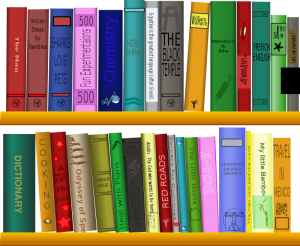
| Fixing typos | No |
| Price change | No |
| Redesigned cover | Yes |
| Ebook versions | Not needed for Kindle, but new ISBN needed for other formats |
| Audio book | Yes |
| Hardcover | Yes |
| New publisher | Yes |
| New size | Yes |
| Translation | Yes |
| Adding a preface, introduction, appendix or other new content | Yes |
| New book in a series | Yes |
| Excerpts and supplemental materials if sold separately | Yes |
In the United States, all ISBN are issued by R.R. Bowker. Here is the Price List:
| One ISBN | $125 |
| Ten ISBN | $250 |
| 100 ISBN | $575 |
| 1000 ISBN | $1000 |
Yes, these prices are outrageous; the result of monopoly pricing. You will be tempted to use a free or low-price ISBN from your POD provider.
Obtaining an ISBN through your POD provider has its drawbacks. At CreateSpace, as of the time I am writing this, if you use one of their free ISBNs, then the publisher of your book will be listed as CreateSpace Independent Publishing Platform, which is like screaming to the world that you are a rookie indie author.
If you purchase one of their Custom ISBNs for $10, then the publisher will listed under your name or your imprint name, but you may use that ISBN only for copies of your book provided by CreateSpace. Should you decide to use a different POD provider to print your books, you will need to obtain a new ISBN.
CreateSpace also offers a Custom Universal ISBN for $99. That is for a single ISBN. Since you will need several ISBNs, it makes more sense to buy a package of ten directly from Bowker for $250. You may use your ISBNs with CreateSpace and other POD providers.
ISBNs are not transferable, so do not buy an ISBN from a friend or through an advertisement. If you purchase an ISBN in the secondary market, there is a risk the number could be cancelled on you.
You cannot recycle ISBNs. If a version of your book goes out of print, you cannot reuse its ISBN for another version or another book.
Bottom line, you should buy a package of at least 10 ISBNs. If you plan to publish several books in various formats, consider investing in 100 ISBNs. They do not expire.
UPDATE: Don’t use different ISBNs for the same book on IngramSpark and CreateSpace. You’ll end up with two different listings on Amazon and at Bowkers. I made that mistake.
If you will be using both IngramSpark and CreateSpace to distribute the same book, be sure to use the SAME ISBN for both.
There is a trick to this. Set up and release your book on IngramSpark first. Their set-up process and review process takes longer than CreateSpace’s, so it’s good to get that one started anyway. While you are waiting, you can start the process with CreateSpace, but don’t give final approval of the book until you have completed and released the book through IngramSpark.
When you are setting up the book on IngramSpark, you may be able to opt out of distribution through Amazon. I have heard people tell me that, but I could never find that option and suspect it is no longer available.
On the CreateSpace site, you want to opt out of Extended Distribution.
If you release the ISBN through CreateSpace first, IngramSpark won’t let you release a book with the same ISBN without jumping through a lot of hoops. I know a lot of people trying to jump through those hoops, without success!! IngramSpark seems weak on customer support,

By Sean Loyless on Flickr
Here’s a scary thought–ideas are not protected by copyright law, no matter how unique and valuable. If you give your elevator pitch in an elevator, anyone who overhears you may snitch it.
Copyright law applies only when a work is fixed into tangible form, such as a notepad or computer file. Even then, copyright law will not protect a core idea. But contract law might.
Some people will advise you to have agents, editors and beta readers sign a Non-Disclosure Agreement, commonly called an NDA, before you pitch your idea, engage the editor, or email the manuscript. From a legal standpoint, asking for an NDA makes sense. From a business perspective, you may be seen as a novice.
The publishing world, like most of the business world, operates on trust and reputation. An agent or editor is unlikely to risk his or her reputation and career by stealing someone’s work. Many will refuse to sign an NDA. I doubt they are planning on stealing your idea, but they may have already seen something similar and don’t want to be accused of breaching the NDA. In fact, they may even send you an agreement looking something like this. Inkwell Management Submission Terms.
However, for beta readers, I would suggest using an NDA, unless you know the reader well. I would also ask cover designers for an NDA. I had the unpleasant experience of seeing my proposed cover designs, with my book title and name, blasted all over the internet by a designer without notice or permission. And this was months before my book was launched. I terminated that relationship.
If you would sleep better at night with an NDA in effect, here’s a sample for your use. Let me know if you find it helpful.
NON-DISCLOSURE AGREEMENT
This Non-Disclosure Agreement (“Agreement”), effective as [INSERT DATE] (“Effective Date”), is made by and between [INSERT YOUR NAME] (“Creator”) and [INSERT NAME OF OTHER PARTY] (“Contractor”). Each of Creator and Contractor may be referred to herein as a “Party,” and they may be referred to collectively herein as the “Parties.”
RECITALS
A. [DESCRIBE SITUATION SUCH AS Creator wishes to engage Contractor to provide editorial assistance in connection with the following project: DESCRIBE PROJECT] (“Project”).
B. Creator, as a condition to its willingness to enter into discussions and negotiations regarding the Project, requires Contractor to maintain as confidential the existence and nature of the Project (“Confidential Information”).
AGREEMENT
THEREFORE, in consideration of the foregoing recitals and the conditions and the covenants hereinafter contained, and for other consideration, the receipt and sufficiency of which are hereby acknowledged, Contractor agrees as follows:
- Contractor hereby agrees (a) to hold all Confidential Information in confidence indefinitely unless otherwise agreed in writing; and (b) to exercise the same degree of care with respect to the use and disclosure of the Confidential Information as it uses to restrict disclosure and use of its own information of like importance and in no event less than due care.
- The obligations imposed in this Agreement shall not apply to any information that (a) is already in the possession of Contractor; (b) becomes publicly available through no fault of Contractor; (c) is obtained by Contractor from a third person who is under no obligation of confidence ; (d) is disclosed without restriction; or (e) must be disclosed by law or court order. This confidentiality provision shall remain in effect for a period of three years.
- Contractor agrees that a breach of its obligations herein will cause immediate and irreparable damage to Creator that could not be adequately compensated for in money damages, and agrees, without prejudice to the rights and remedies otherwise available, that Creator shall be entitled to equitable relief (without having to prove irreparable harm) by way of injunction or otherwise.
- In the event any action or proceeding at law or in equity among the Parties to enforce or interpret any provision of this Agreement, the unsuccessful Party shall pay to the prevailing Party all costs and expenses including, without limitation, reasonable attorneys’ and expenses, incurred by such prevailing Party in such action or proceeding and in any appeal in connection therewith.
- This Agreement may be signed in two or more counterparts. This Agreement shall be construed in accordance with the laws of the State of [CREATOR’S STATE]. This Agreement is the entire agreement among the Parties with respect to its subject matter. No provision of this Agreement shall be deemed waived, amended or modified by any Party, unless such waiver, amendment or modification is made in writing and signed by both Parties.
IN WITNESS WHEREOF, the Parties executed this Non-Disclosure Agreement as of the Effective Date.
And of course, sign it.
Image used under Creative Commons license.
 Scholars, critics and mainstream publishers look down their noses at fan fiction and consider it unoriginal, non-commercial, and a joke. But E. L. James, author of Fifty Shades of Grey, is laughing all the way to the bank. Her trilogy, originally a fan-fiction take on the TWILIGHT series, has sold over 90 million copies and has been translated into 53 languages.
Scholars, critics and mainstream publishers look down their noses at fan fiction and consider it unoriginal, non-commercial, and a joke. But E. L. James, author of Fifty Shades of Grey, is laughing all the way to the bank. Her trilogy, originally a fan-fiction take on the TWILIGHT series, has sold over 90 million copies and has been translated into 53 languages.
Fan Fiction uses characters and settings from popular books, movies, and television shows and puts them in new situations and adventures. Star Trek, Harry Potter, Buffy The Vampire Slayer, and Twilight have spawned countless fan fiction works. Writers have created prequels, sequels, alternative endings and mixed-up romantic pairings.
However, fan fiction is legally problematic. Since it relies on characters and settings created by others, fan fiction may be considered copyright infringement. Yet, some big-time authors and producers encourage fan fiction, because it increases exposure of the underlying work. Others tolerate it so long as it is not obscene or offensive. But some are quick to set their lawyers loose on fan fiction writers. Don’t be one of them.
Three factors are taken into consideration in determining whether fan fiction is infringing.
 Is the original material protected by copyright? Ideas, generic settings, and stock characters are not protected by copyright. No one owns the exclusive right to deep-space adventures or post-apocalyptic cities. No one owns stereotypical characters such as the tough-talking gangster or handsome-but-dull hero. Fan fiction writers may use generic setting and characters without infringing on the rights of others. But be sensible about it. If you go too far and incorporate unique and identifiable elements from the original work, you are edging towards infringement.
Is the original material protected by copyright? Ideas, generic settings, and stock characters are not protected by copyright. No one owns the exclusive right to deep-space adventures or post-apocalyptic cities. No one owns stereotypical characters such as the tough-talking gangster or handsome-but-dull hero. Fan fiction writers may use generic setting and characters without infringing on the rights of others. But be sensible about it. If you go too far and incorporate unique and identifiable elements from the original work, you are edging towards infringement.
Is the fan fiction a derivative or a transformative work? Under the U.S. Copyright Act, the copyright owner has the exclusive authority to make derivative works such as translations, dramatizations, sound recordings, abridgements, and adaptations. However, over the past two decades, the courts have created a new category called transformative works that are considered fair use.
There is no clear definition of transformative work. At a minimum, it means that the original work was substantially changed by adding information or meaning, altering its aesthetics, or perhaps making it appeal to a new audience. Parody may be transformative. For example, 2 Live Crew took the opening musical tag and the words from the first line of Pretty Woman, and “transformed” it into a fair-use parody of the original. That case went all the way to the Supreme Court.
 Similarly, owners of the rights to Margaret Mitchell’s Gone With the Wind tried to stop publication of Alice Randall’s The Wind Done Gone, a retelling of the story from the point-of-view of Scarlett O’Hara’s half sister Cynara, a biracial slave on Scarlett’s plantation. The Circuit Court Judge found Randall’s work to be transformative because it “[provided] social benefit, by shedding light on an earlier work, and, in the process, creating a new one.” The suit was ultimately settled out of court, and the book is on the market.
Similarly, owners of the rights to Margaret Mitchell’s Gone With the Wind tried to stop publication of Alice Randall’s The Wind Done Gone, a retelling of the story from the point-of-view of Scarlett O’Hara’s half sister Cynara, a biracial slave on Scarlett’s plantation. The Circuit Court Judge found Randall’s work to be transformative because it “[provided] social benefit, by shedding light on an earlier work, and, in the process, creating a new one.” The suit was ultimately settled out of court, and the book is on the market.
To qualify as transformative, the new work should use as little of the original as possible, and it should consist primarily of newly created material. Generally, the more “transformative” the fan fiction piece, the less likely it will be considered infringement.
Is fan fiction fair use? Not always.What’s fair use to one judge may be infringement to another, which is why most lawyers encourage their clients to obtain permission (or if sued, settle) rather than risk going to trial.
If you are interested in publishing fan fiction for commercial purposes, use as little of the original work as possible and add new, transformative elements. Insert a disclaimer stating that your fan fiction piece was NOT created by the original author, but give the original author credit for what he or she did create.
Don’t invest a lot of time or creative energy into a commercial project before you research whether the owners of underlying work encourage fan fiction or squelch it. Some will grant licenses for fan fiction projects if requested and approved. I highly recommend getting a license if it is available. You’ll sleep better knowing you have the right permission.
Even i f your creation is brilliantly transformative and clearly fair use, publishing and film companies hire big time lawyers who could make your life miserable. As I have said before and will say again, stay out of court and at your desk. Your time and energy are better used for writing.
f your creation is brilliantly transformative and clearly fair use, publishing and film companies hire big time lawyers who could make your life miserable. As I have said before and will say again, stay out of court and at your desk. Your time and energy are better used for writing.
Enter AMAZON
Amazon, of course, has jumped into the fan fiction phenomenon. Amazon has licensed a number of popular works and created a publishing platform for commercializing fan fiction Kindle Worlds.
 The licensed works include:
The licensed works include:
- Gossip Girl, by Cecily von Ziegesar;
- Pretty Little Liars, by Sara Shepard;
- The Vampire Diaries, by L.J. Smith,
- And to my surprise, Kurt Vonnegut
Warning. Before you publish fan fiction on Kindle Worlds, read the publishing agreement carefully. You will be giving Amazon “an exclusive, irrevocable license for the full term of copyright (including renewals), to develop, license, reproduce, print, publish, distribute, translate, display, publicly perform and transmit your work, in whole and in part, in each country in the world, in all languages and formats, and by all means now known or later developed, and the right to prepare derivative works of your work.” Ouch!
And, the royalty rates are lower than you will receive on Kindle Direct Publishing. I suspect this is because Amazon must pay a royalty to the licensor on every sale.
What if your work becomes the target of fan fiction?
You have two choices. Sit back and enjoy the ride. The publicity may boost sales. Or fight it, in which case you’ll need a lawyer.
True or False: If an image, poem, essay or short story is posted on the internet, it’s in the public domain and anyone can use it.
False, but so many people seem to forget that, especially with images.
What works are in the public domain in the United States?
There are five major categories of public domain works.
1. Works where the copyright have expired. For example, Shakespeare’s plays, Mozart’s sonatas and Leonardo daVinci’s Mona Lisa. For works created and copyrighted in the U.S., any work first published before January 1, 1923 is in the public domain. The duration of copyrights for works created in different countries may be different. Due to some Congressional favors to large corporations such as Disney, no copyrighted works will enter the public domain due to copyright explanation until 2019.
 However, trademarks do not expire. They last as long as they are used to identify the source of a good or service and do not become “generic” like aspirin or ping-pong. So do not assume a trademark that has been in use for more than 95 years is in the public domain. Generally, you may mention a trademark in your writing without a problem, but don’t try to use it as a brand name in any way.
However, trademarks do not expire. They last as long as they are used to identify the source of a good or service and do not become “generic” like aspirin or ping-pong. So do not assume a trademark that has been in use for more than 95 years is in the public domain. Generally, you may mention a trademark in your writing without a problem, but don’t try to use it as a brand name in any way.
2. Works which are not copyrightable. Book titles, movie and song titles, the names of people and places, ideas, procedures, methods, concepts, principles, raw data, and objective information are not protected by copyright and are in the public domain. Yes, you can use the title of a song, even if its lyrics are still protected by copyright.
3. Works donated to the public domain through a Creative Commons license. A creator may use the Creative Commons C0 mark to designate that the work has been donated to the public domain. The Creative Commons has a similar mark for works which are already in the public domain. 

4. Works where the copyright was lost. Typically, copyright claims were lost if the work was published without notice prior to March 1, 1989 or if an early copyright registration was not renewed. It can be so difficult to figure this out, that I would not rely upon this exception without consulting an experienced attorney.
5. Works created or owned by the U.S. Federal government. Tens of millions of images, recordings, personal narratives, reports and other works are available on the Library of Congress site. This famous photo of Florence Owens Thompson is part of the Library Congress Collections.
 Most people don’t know what treasures belong to all of us. Almost everything at the Library of Congress is in the public domain. Their collections include recordings of folk, gospel and blues songs from the 1930’s, recordings by Woody Guthrie and famous Dorothea Lang photographs from the 1930s.
Most people don’t know what treasures belong to all of us. Almost everything at the Library of Congress is in the public domain. Their collections include recordings of folk, gospel and blues songs from the 1930’s, recordings by Woody Guthrie and famous Dorothea Lang photographs from the 1930s.
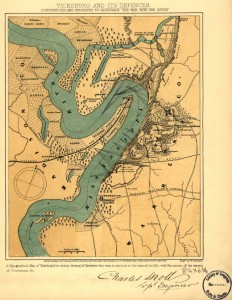
Library of Congress
You can download copies of Civil War maps, baseball cards from late 1800s, photos of child labor, war scenes, farm settings, old cars. It’s a tremendous source of information and inspiration, and free thanks to the concept of the Public Domain.
Spend some time at the LOC site. You’ll be stunned by the breathe and beauty of the collections. And you’ll find plenty of images to use for free. Take a close look at this one…

 Your words are your creation, your identity, and your currency, and scam artists will try to steal them from you. They’ll hand you a contract and claim “it’s standard. Everyone signs it.”
Your words are your creation, your identity, and your currency, and scam artists will try to steal them from you. They’ll hand you a contract and claim “it’s standard. Everyone signs it.”
Don’t believe them. Every contract is negotiable, especially when you know what to negotiate. Here are some basics terms to help you understand contracts.
1. License. A license is a right to use only; you, the creator, retain actual ownership of the copyrighted work. 99% of the time, a writer will be granting a license (not an assignment).
A license is similar to a lease. Suppose you are a landlord, and you lease portions of your property to various tenants. You still own the building. Some apartments may be exclusive to one tenant, while other portions, such as the lobby, may be used by all tenants and are non-exclusive.
Licenses may be exclusive or non-exclusive, world-wide or geographically-restricted, short-term or perpetual, royalty-free or royalty-paying, limited to particular format such as audio books, print, e-books or language; the permutations are endless.
But you will only know what you are granting if you read the contract. Carefully.
2. Exclusive. If you grant an exclusive license to a publisher, then that publisher has the right to stop everyone else from using your work, even you.
Never grant an exclusive license without understanding exactly what you are doing. Never grant an exclusive license to someone who cannot exploit your work for your benefit. Never.
I have seen online contracts with self-publishing service companies in which the writer grants the company an exclusive license in every format for the life of the copyright. Even the author cannot use her own work. These aggressive clauses are buried deep in the document. Search them out. If you see one, do not agree.
3. Assignment. When you transfer actual ownership of a creation, that transfer is called an assignment. An assignment is forever (with few exceptions), so do not use the word casually. While a license may be terminated if the licensee fails to pay royalties or exceeds its rights, an assignment is rarely reversible.
On the flip side, there are times when you want a full assignment of rights. When you hire a freelancer to create your cover, website or custom illustrations, then that freelancer should assign all rights to the final work to you upon completion and full payment.

4. Indemnity. An indemnity is a promise to defend and reimburse someone from a legal claim and economic loss. As a writer, you will sign many agreements in which you “warrant” your work is original and non-infringing and you agree to indemnify the other party from any claim to the contrary. This means you must hire the attorneys and pay everyone’s legal fees, damage awards and settlement costs.
Read all representations, warranties and indemnities in your contracts. If you don’t understand them, ask the other party to explain what the contract means in an email, and save that email. And consult an attorney. If you cannot make the warranties with confidence, then revise them to reflect reality.
5. NDA. Non-Disclosure Agreement. If you sign an NDA or confidentiality agreement, take the responsibility seriously. No matter how excited you are about the project, don’t brag or leak information. You could get sued.
If you want your editors, cover designers, agents, and so on to keep quiet about your current project, have them sign a Non-Disclosure Agreement.
Have you been tripped up by contract terms? Please leave a comment and let other writers know.
 Everyone does it. Downloads a great image from the internet, pastes it on their own blog, shares it on FaceBook, Tumblr or Pinterest, and moves on, forgetting, ignoring, or simply not knowing they are using someone’s property without permission. It’s like borrowing someone’s car without permission and not refilling the gas tank.
Everyone does it. Downloads a great image from the internet, pastes it on their own blog, shares it on FaceBook, Tumblr or Pinterest, and moves on, forgetting, ignoring, or simply not knowing they are using someone’s property without permission. It’s like borrowing someone’s car without permission and not refilling the gas tank.
My mother said it best. “Just because everyone else is doing it, doesn’t make it right.”
Sorry to say, but your chances of getting caught are increasing. You’ll open your email one morning to find a nasty lawyer letter demanding a multi-thousand dollar payment.
New “reverse image search engines” are expanding their reach. Everyone from casual photographers to international stock image vendors are signing up with TinEye and others to scan the internet for infringing users. TinEye claims to have indexed over 4 Billion images.
Even Google Images performs reverse image searches.
But it’s fair use, you argue. You are using the image for non-commercial, educational, critical, or commentary uses only. Maybe yes, but do you want to fight that fight with Getty Images or Reuters News or Rupert Murdoch?
Take an hour to clean up your blog. Here’s how.
First, determine who owns an image. Go to TinEye or Google Images and upload the image. On Goggle Images, click on the camera icon in the search line. You will get a list of results.
If the list includes one or more stock image sites such as Dreamstime, Getty Images or IStockphoto, then sooner or later, you are going to get that nasty lawyer letter. These companies search the internet for infringing users. They hire teams like the Copyright Enforcement Group.
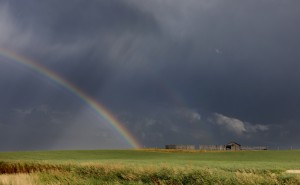
Licensed from Dreamstime.com
I suggest you delete the unauthorized image and replace it with a licensed image ASAP. (See my post Stock Images – A Little Money Goes a Long Way.) You do not have to buy a large or high-resolution image. The smallest and lowest resolution image works for most web uses. Keep your receipt. You might get a demand letter based on your prior use (after all, nothing completely disappears from the internet), but it will help if you have corrected your mistake.
If you find the image only on news or other websites, look for a copyright notice on or near the image. Search on-line for the copyright owner and ask permission to use the image. If you can’t find a copyright notice, contact the largest and most prestigious website using the image. That site is most likely to have obtained permission.
If you cannot determine who owns the image, or if you cannot get permission, or if you do not want to pay for the license, or if all this is too much bother, then delete the image and replace it with something in the public domain or a free image under a Creative Commons License. See my blogs about the public domain and the Creative Commons.
For fun, try a Google Reverse image search of your author head shot. The results may surprise you. When I ran mine, Google including a photo of Julia Roberts as a “visually similar image.” Sure. Why not.
 The writer was distraught. Just as her book was picking up sales, another novel appeared on Amazon with the exact same title. “It’s been pinched,” she said in her British lilt.
The writer was distraught. Just as her book was picking up sales, another novel appeared on Amazon with the exact same title. “It’s been pinched,” she said in her British lilt.
I hated to tell her that titles are not protected by U.S. copyright law.
It’s ironic. Anyone who has written a book will tell you how difficult it is to come up with a title that is both resonant and eye-catching. Yet titles are not protected under copyright law because they are considered too short to contain sufficient “original expression.”
But there is a way to protect some book titles, trademark law. Not all titles will qualify; they must meet certain criteria. If you want any chance of getting trademark protection for your book title, read on.
(Trademarks differ from copyrights. You own a copyright as soon as you put your work into tangible form. It’s automatic. But trademark rights are acquired by actual use of the mark in connection with the sale of goods or services. Even then, the mark must be distinctive and not confusingly similar to another mark already in use on a similar product.)
To become a trademark, your title must have the following Trademark Elements:
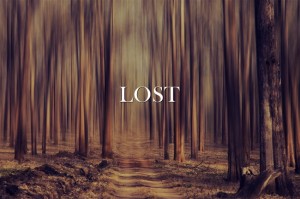 The title must be unique and distinctive. Go to Amazon and search “betrayed.” You’ll find over twenty-five books with that title. While you’re at it, search lost, shadow, stolen, revenge, forgiveness, love, or guide to life with…children, cancer, a golden retriever. If your title consists solely of common words, then you can write off claiming it as a trademark, with one exception which I’ll discuss below. For trademark purposes, the best titles are unique, made-up words like Swamplandia or Freakonomics.
The title must be unique and distinctive. Go to Amazon and search “betrayed.” You’ll find over twenty-five books with that title. While you’re at it, search lost, shadow, stolen, revenge, forgiveness, love, or guide to life with…children, cancer, a golden retriever. If your title consists solely of common words, then you can write off claiming it as a trademark, with one exception which I’ll discuss below. For trademark purposes, the best titles are unique, made-up words like Swamplandia or Freakonomics.
And
The title is not merely descriptive. Descriptive titles, such as Hiking Trails of the Sierras or How to Trim an Apple Tree, are rarely trademarks.
And
Your book is part of a series. You are more likely to gain trademark status for the title of a series of books, such as Harry Potter, Dairy of a Wimpy Kind or the For Dummies line.
Or
Your book is part of a broader business venture. If your book grew out of (or grows into) a larger enterprise, such as consulting, public speaking, workshops, DVDs sales, or merchandising, then your title and related phrases are likely to be considered trademarks. For example, Freakonomics. Generally, people’s names cannot become trademarks, but Martha Stewart and Deepak Chopra are both registered trademarks because they are associated with larger businesses.
However, if your series title consists of common or descriptive words only, then the name may not qualify as a trademark. The exception–Secondary Meaning.
Well-known titles with Secondary Meaning. The title of an individual book or series may be entitled to some trademark protection if it is so well-known that it achieves “secondary meaning.” For instance, The Da Vinci Code or The Book Thief. If you released The Doug Vinci Code, you would be inviting a lawsuit for unfair competition or some other claim.
If you have a unique and distinctive title that is associated with a series or a larger business, consider registering the trademark with the Federal Patent and Trademark Office. Registration has many advantages. For more information, visit the USPTO page titled Trademark Basics.
You need not wait until your series or business is launched to apply for trademark registration. If you have a good faith intention to use the trademark, then you may file an “intent-to-use” (“ITU”) application. An ITU application allows you to “reserve” your mark for up to thirty-six months. When book two of your series is published or your book-plus-business is up and running, file a Statement of Actual Use to become a fully-registered trademark.
Mark Fowler’s has a great post this topic.
Also check out. Lloyd J. Jassin’s Copylaw.com and Brian A. Klens in Writers Digest
Do you think this is fair? Should it be easier to trademark a distinctive book title?












 f your creation is brilliantly transformative and clearly fair use, publishing and film companies hire big time lawyers who could make your life miserable. As I have said before and will say again, stay out of court and at your desk. Your time and energy are better used for writing.
f your creation is brilliantly transformative and clearly fair use, publishing and film companies hire big time lawyers who could make your life miserable. As I have said before and will say again, stay out of court and at your desk. Your time and energy are better used for writing.









